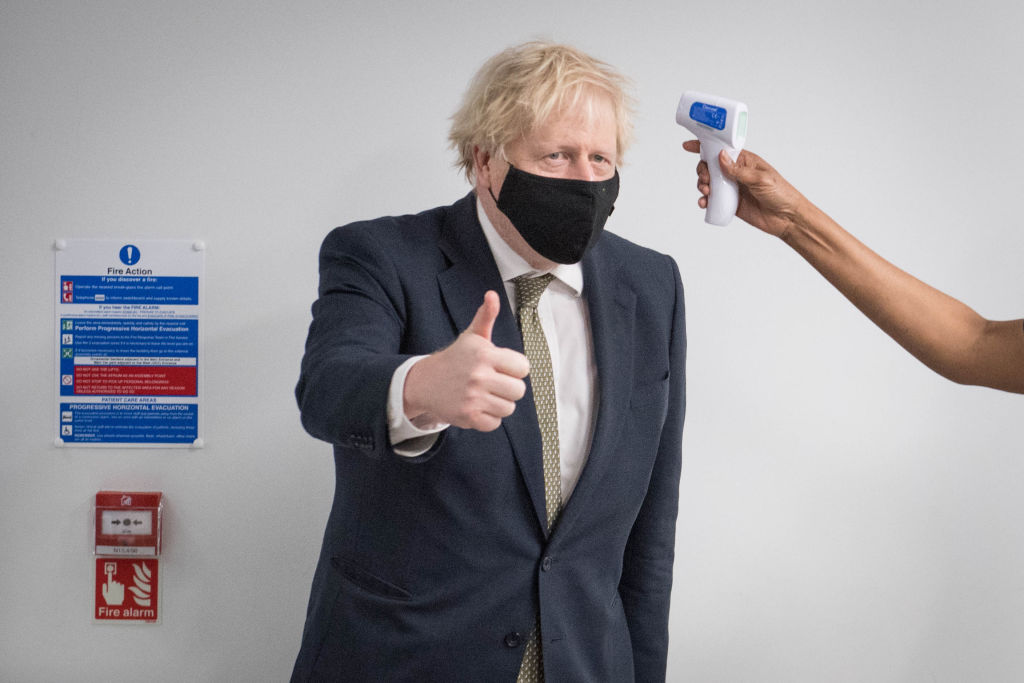The government has failed to meet so many Covid-related targets so far that many will be extremely sceptical of the Prime Minister’s pledge on Monday evening to get the over-70s, front-line care workers and vulnerable people of all ages vaccinated by the middle of February. That is around 13 million first doses which will have to be delivered over the next six weeks – compared with just over a million which have been administered since the Pfizer vaccination programme began four weeks ago. We now have the AstraZeneca vaccine as well as the Pfizer one, but can the NHS really increase the rate of vaccination tenfold, as would be necessary to meet the PM’s target?
There ought not to be a problem with the vaccination process itself. The Pfizer jab has been given at three minute intervals – or 20 an hour. Multiply that by the 7000 or so GPs’ surgeries in England and we ought easily to be able to vaccinate a million people a day, allowing Boris Johnson’s target groups to be inoculated before the end of next week.
But that isn’t really the limiting factor. The greater problem is supply of the vaccines themselves. While the government has pre-ordered more than enough of the vaccines to provide two doses for the entire population: 40 million of Pfizer and 100 million AstraZeneca for a population of 66 million (although there is no plan to vaccinate children), not all have been manufactured, or delivered.
Manufacture itself, however, shouldn’t be a problem: 15 million AstraZeneca doses have been produced, enough already to hit the PM’s target. But only around four million have so far been put into vials, ready for use. An even more limiting factor is the quality control process. Since the Therapeutic Substances Act, 1925, all drugs must be independently checked for quality – work that is done by the National Institute for Biological Standards and Control. But this only has 300 staff, who have batches of many other drugs to check. As a result, only 530,000 doses of the AstraZeneca vaccine were ready for use by the beginning of this week. If the PM is to reach his target for vaccinations, the speed of the quality control process – and the numbers of technicians available to undertake it – is going to come under increasing focus.
Meanwhile, will the latest lockdown slow the epidemic fast enough to ensure that we can all be vaccinated before we catch the virus? The spring lockdown was credited for bringing the first wave under control – the peak in deaths occurred just two weeks after the full lockdown came into effect.
The trouble is that the new lockdown cannot be expected to have nearly as much effect, however well it is observed – for the simple reason that many of the measures it involves, such as closed shops, bars, and stay at home orders, were already in place over much of the country.
The government’s own figures do not hold out much hope that the new lockdown will abate the epidemic. In the spring lockdown, it calculated, the ‘R’ number fell to between 0.7 and 0.9. But the new variant has been calculated to increase the ‘R’ number by between 0.4 and 0.7. By these figures, assuming that the new lockdown has the same effect as the original, we can now expect an R number between 1.1 and 1.6 – not enough to stop it growing exponentially.
The seven day average of new cases of Covid have increased 50 per cent in a week, with over 58,000 new cases on Monday. If that were to continue, then, by the middle of February, we would have over 600,000 people a day being infected – assuming there were any more people left to infect. In practice there are many more infections – asymptomatic ones – than the government’s figures capture. It is hard to see, even if the PM does hit his vaccination target, how it could outpace the progression of the epidemic of the new strain of Covid-19. At current progress, it could run its course well before we can all be vaccinated.







Comments